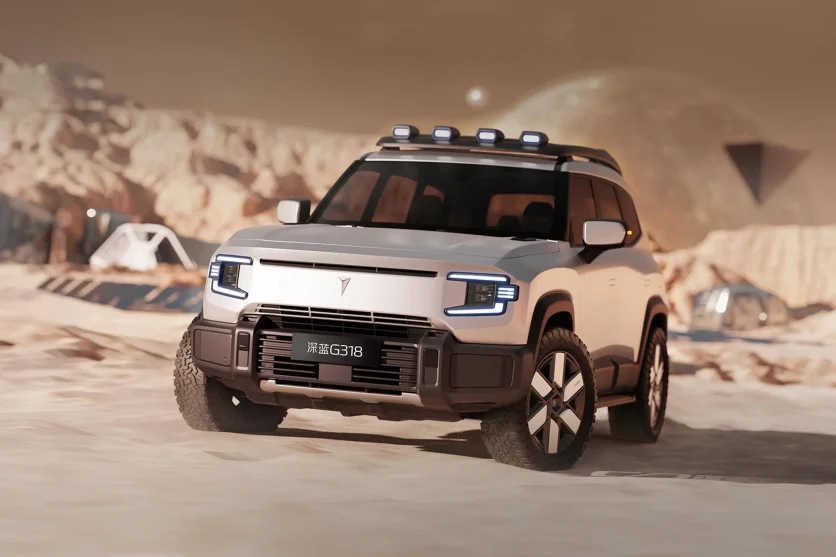How to Choose a Suitable Vehicle for Electric Off-Roading
For a long time, internal combustion engines have dominated the off-roading scene, taming wild terrains and conquering mountains. However, a new era is emerging, powered by silent torque and eco-friendly exploration. Electric vehicles (EVs) are carving a niche in the off-road world, offering unique capabilities and addressing environmental concerns.
Choosing an electric off-road vehicle (E-ORV) requires a shift in thinking. In this article, we’ll delve into the exciting realm of electric off-roading and highlight key factors to consider when selecting your ideal electric adventure companion.
The Benefits of Electric Off-Roading
Electric motors bring several advantages to off-road driving:
(1) Instant Torque:
Unlike gasoline engines that build power gradually due to gear ratios, electric motors deliver instant torque when you press the accelerator. This translates to superior low-end power for climbing steep hills, navigating rocky paths, and powering through mud. It also makes the vehicle exceptionally quick on regular roads.
(2) Silent Operation:
The quiet nature of E-ORVs allows you to experience the natural sounds around you, making off-roading a more immersive and wildlife-friendly activity. Loud engines can scare away wildlife and drown out important sounds, like shifting rocks, that are crucial while off-roading.
(3) Low Center of Gravity:
EV batteries are typically mounted under the floor, lowering the center of gravity. This enhances stability on uneven terrain, reducing the risk of rollovers and improving street performance.
(4) Regenerative Braking:
Descending hills is common in off-roading. E-ORVs use regenerative braking, which converts downhill momentum into battery power, extending range and providing additional control on steep descents.
Types of Electric Off-Road Vehicles
The e-ORV market is diverse, catering to various needs and budgets. Here’s a look at the main categories:
(1) Electric SUVs and Trucks:
These full-size vehicles are popular in the off-road sector for their size, durability, and practicality. Examples include the Changan Deepal G318 and the GWM Tank 700 Hi4-T.
(2) UTVs (Utility Task Vehicles):
UTVs are smaller, open-air vehicles perfect for navigating tight trails and technical terrains.
(3) Electric Bikes and Motorcycles:
For two-wheeled enthusiasts, electric dirt bikes and motorcycles provide a lightweight, nimble experience with near-silent operation.
Choosing Your Electric Off-Road Companion: Key Considerations
Beyond the type of vehicle, here are crucial factors to ponder when selecting your e-ORV:
(1) Range:
Range anxiety is a significant concern for off-roading, where charging stations are often scarce. Consider the typical distance of your adventures and choose an e-ORV with a range that comfortably exceeds those needs. Remember, off-road driving can significantly reduce range due to challenging terrain and increased power usage.
(2) Ground Clearance:
The ability to clear obstacles is vital for off-roading. Look for vehicles with ample ground clearance to avoid scraping the undercarriage on rocks or uneven surfaces. Many electric SUVs and trucks offer adjustable suspension for additional clearance when needed.
(3) Approach and Departure Angles:
These angles determine how steep an incline or decline the e-ORV can handle without scraping the front or rear bumper. Opt for vehicles with good approach and departure angles to tackle varied terrains effectively.
(4) Water Fording Depth:
If crossing rivers or streams is part of your off-road adventures, water fording depth becomes crucial. Ensure your e-ORV can handle the expected water depth.
(5) Winching Capability:
Getting stuck is a possibility off-road. Choose an e-ORV with strong winch points or an integrated winch for self-recovery or assisting others.
(6) Charging Options:
While charging infrastructure is improving, remote areas might lack readily available charging stations. Consider e-ORVs with Level 3 DC fast-charging capabilities for quicker top-ups. Explore portable charging solutions like solar panels or generators for extended expeditions.
(7) Durability and Build Quality:
Off-roading is tough on vehicles. Opt for e-ORVs with robust construction, high-quality materials, and a proven track record of reliability on challenging terrains.
Beyond the Vehicle: Gearing Up for Electric Off-Roading
After selecting your ideal e-ORV, consider these additional elements to ensure a successful off-road adventure:
(1) Off-Road Tires:
Equip your e-ORV with all-terrain or mud-terrain tires for superior grip and traction on loose surfaces.
(2) Recovery Gear:
Pack essential recovery gear like tow straps, traction mats, and a shovel for potential mishaps.
(3) Safety Gear:
Always prioritize safety. Wear a helmet, proper clothing, and eye protection while off-roading.
(4) Planning and Knowledge:
Research the terrain you intend to explore. Know your limitations and the capabilities of your e-ORV. Practice off-road driving techniques in a safe environment before tackling challenging trails.
(5) Leave No Trace:
Respect the environment. Practice responsible off-roading by sticking to designated trails, minimizing impact on wildlife, and packing out all trash.
The Future of Electric Off-Roading: A Brighter Path
Electric off-roading is still in its early stages but evolving rapidly. Battery technology continues to improve, offering greater range and shorter charging times. The coming years will likely see a surge in e-ORV options catering to diverse needs and budgets.
Embracing electric off-roading paves the way for a more sustainable future for off-road enthusiasts and the natural world alike.
So, ditch the roar and embrace the hum. The world of electric off-roading awaits, promising silent power, endless exploration, and the chance to be part of a sustainable adventure. Here at GuangcaiAuto, we have fantastic vehicles like the Fangchengbao Bao 5 that perfectly align with this article. Feel free to check them out!




